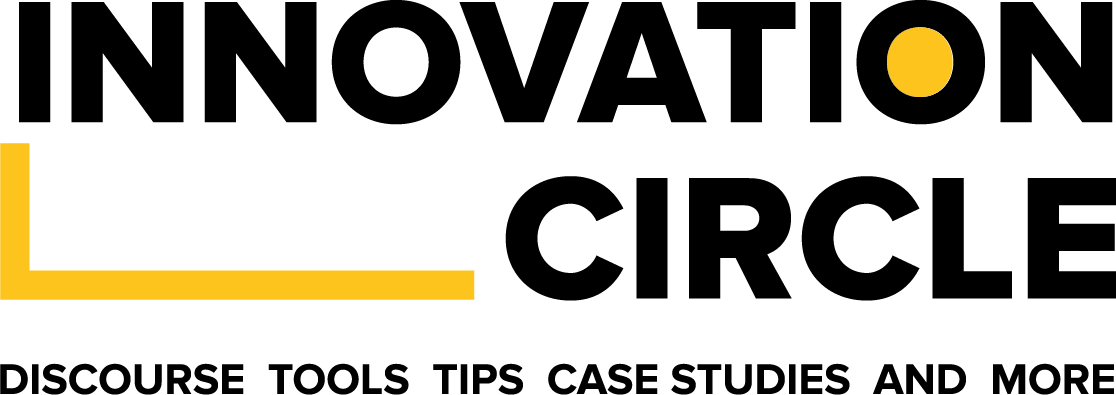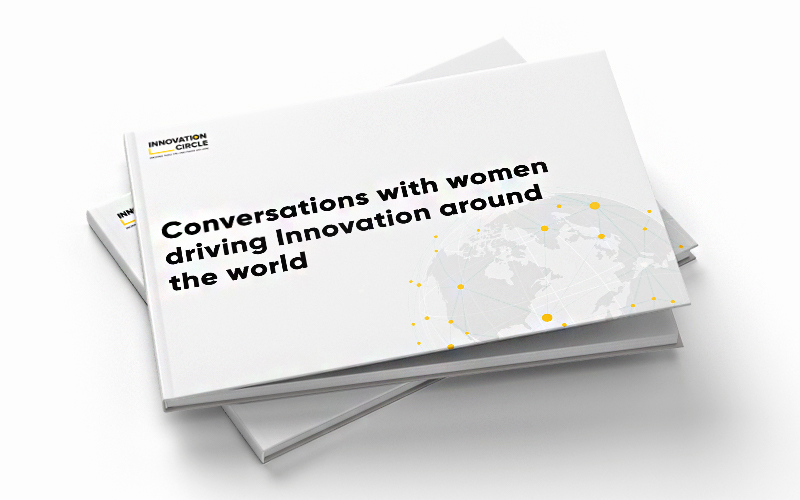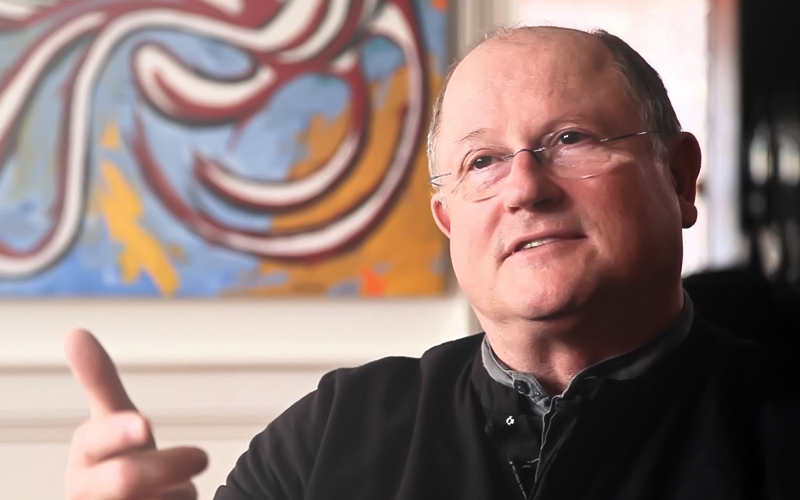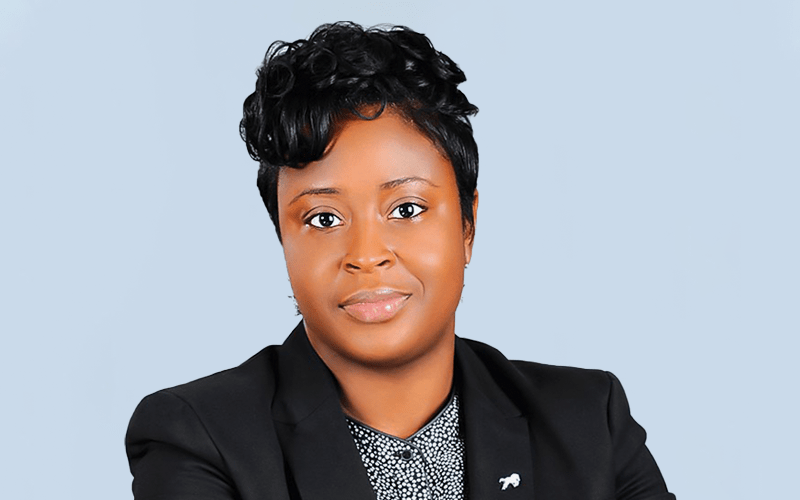
A Conversation with Valentina Salvi, Senior Service Designer, Accenture Interactive
A well-designed service system should enable a combination among actors, resources, and processes able to deliver strong value to the end-users, which is easier said than done.
Can you share with us your background in design?
It all started when I first got my Bachelor’s Degree in Industrial Design from the Politecnico School of Milano. During my third year at the university, I was lucky to join an exchange program called MEDes (Master of European Design) where I took the chance to spend two years studying abroad in both Glasgow and Paris. While being abroad I first discovered the essence of the term “Service Design” and quickly realized that my interest and professional ambitions were pointing exactly in the Service Design direction.
After such realization came to fruition, I decided while I was freelancing, to complete a Master solely dedicated to Service Design, and I took the chance to fully embrace this new professional path. After an enriching experience at Paco Design Collaborative where I spent 4 months in Namibia to work on the field for the EU funded PARTY Project, I was keen to keep being challenged and looked onward to doing so in Amsterdam as the city and its vibrant environment had always a loving spot in my heart. It was then that I decided to take a working opportunity and joined Accenture Interactive Amsterdam (Mobgen at the time) where I became the first member of what is now an outstanding 12+ Service Design team.
You’ve worked with various companies, big and small, can you share with us how can stimulate innovation inside those companies? (I’m asking based on your experience as a Service Designer)
Based on my practice as a Service Designer and Design Consultant, I learned that innovation is a mindset that should be embraced by companies from within. Infusing and fostering Customer-Centricity is the access to great, meaningful innovation that matters, and most importantly, that gives companies the readiness to turn new products and services into a success.
“…innovation is a mindset that should be embraced by companies from within.”
Design Thinking, with its inner human-centered approach, is usually the very first reliable methodology to ease companies in creating internal awareness among their values and use the power of design to strive while keeping their end-users in mind. To solve the right problem, you always need to ask the right questions first, therefore research and investigation of your end-customers, the ones that are using your product or service, are the engine of it all. Evidence-based iteration is the overarching principle behind Design Thinking, and something companies of any size tremendously benefit from to stay relevant and being meaningful in an era of liquid expectations, where new needs and challenges are constantly unfolding.
“To solve the right problem, you always need to ask the right questions first.”
Another aspect that truly stimulates innovation is co-creation, one of the key fundamentals of Service Design itself. Co-creating means applying techniques enabling a diverse, multifaceted team, where in most cases participants come from different departments and fields, to shape a vision, ideas, progress, together. This facilitates joint understanding and problem solving, uncovering the reasons why things are done the way they are done, the underlying pain points and the opportunities to ride. Co-creation enables creativity to shine through and generate innovative solutions beyond the known and the obvious. I urge companies of any size to embed these methodologies and ways of working as part of their internal processes and growth
“Co-creation enables creativity to shine through and generate innovative solutions beyond the known and the obvious.”
Can you tell us what Service Design’s values to businesses are?
The core principles of Service Design are:
1. Human-centered / It unlocks desirable experiences based on real needs, research and data;
2. Co-creative / It enables shared ownership and stakeholders involvement making success everyone’s responsibility;
3. Holistic / It considers desirability, as well as viability and feasibility for true success;
4. Iterative / It promotes focused effort where that’s rewarding;
5. Sequential / It unleashes one vision of the truth by visual, cross-touchpoints artefacts.
These principles are what enable Service Design to maximize business value and accelerate innovation for companies, in the following manner:
· Saving costs: By validating assumptions with end-users, Service Design reduces the risk of big, costly mistakes.
· Engagement & loyalty: Loveable experiences increase NPS scores, user adoption, and retention rates.
· Making user impact: Service Design focuses on solving real user problems and seizes amazing experiences out of it.
· Increasing speed to market: By using rapid iteration to quickly validate new opportunities and reduce development time.
· Focused problem-solving: Through practical design thinking tools, Service design uncovers and tackles the root cause of the perceived problem to project new solutions that matter.
How can companies who are more product-centric infuse Service Design to improve the values they offered to clients?
To be relevant and meaningful to consumers nowadays, it’s of fundamental importance for a business to focus on the whole customer journey. Brand values should be tangibly reflected and perceived from customers at every touchpoint of the experience. Digital products often represent just one kind of touchpoint within a journey of interactions, and opportunities are not often maximized.
“To be relevant and meaningful to consumers nowadays, it’s of fundamental importance for a business to focus on the whole customer journey.”
By conducting research, visualizing your findings, extruding them into As-Is Journeys, Personas, Blueprints, and co-creating solutions, customers’ negative emotions along these journeys can turn into fulfilling moments of delight and reward. Service Design enhances the uncovering for companies of low hanging fruits and long-term benefits that increase the business impact, customer satisfaction, and show differentiating factor among competitors.
In what ways would you say financial institutions can apply Service Design to improve and transform the way they offer their services to customers?
I’ve been working on a range of projects within the financial sector, from banking to pension, and in my experience, the Design Sprint methodology was a great pragmatic way to reimagine such services for customers. In a condensed time window of 4 to 5 days, we were able to scope on the problem, generate multiple ideas, pick one or two to prototype, and ultimately test them with 5 users. I found the process incredibly effective and its fast-moving quality makes it a perfect starting point for institutions that are struggling to find their commitment and space to embrace changes and innovation.
Also, too often institutions rely on NPS score and quantitative data only to assess the level of customer satisfaction towards their own business. Data and statistics are surely important but they are – in my view, unable alone to understand deep consumers’ needs, pain points, and spot opportunities. Qualitative research should be the starting point to initiate any project with a human-centred approach, to gather insights based on real conversations and observational in-context techniques. Such insights should be strengthened and complemented by quantitative analysis. Research is fundamental to understand the now and be able to shape future ways to handle any service, including the financial ones.
“Qualitative research should be the starting point to initiate any project with a human-centered approach, to gather insights based on real conversations and observational in-context techniques.”
Are there practices round Service Design you think companies could apply on their own to improve on their internal processes?
Service Design is a mindset, a skillset, and a wide range of specialties under one name, that can be trained and learned. It is a matter of fact that businesses – from Banks to Insurances and Telco’s – have incorporated Service Design more and more by creating internal teams that are dedicated to the replication and enablement of such processes.
There’s a lot that can be done for companies if they become empowered by the right – in-house or outsourced – Service Design skills and expertise. To give an example, Personas, Customer Journeys, Blueprints are visual artifacts that can enormously help companies in moving forward, face challenges, and respond to them with meaningful solutions. They provide a shared, complete, and unified common ground in decision making towards innovation.
“There’s a lot that can be done for companies if they become empowered by the right – in-house or outsourced – Service Design skills and expertise.”
Moreover, Design Sprints, workshops, internal training on customer-centricity, and specific methods are key assets Service Design capabilities should be leveraged for. Service Designers should amplify their role of users’ advocates for the whole company to become more customer-centric and innovation-driven.
What would you define as a well-designed service system?
Over the past few decades, Services have represented a Post-Industrial alternative shifting consumers’ attention and value from the concept of “ownership” to the one of “accessible functionality”. People no longer want as many things as they did during industrial times. They just want to be able to use them conveniently, when they need them.
In addition to the “ownership vs access” element, a well-designed service system should enable a combination among actors, resources, and processes able to deliver strong value to the end-users, which is easier said than done. Furthermore, successful services like Airbnb, Amazon Kindle, Uber to mention some, have maximized assets that were already there, already available: what made them a success was re-imagining a new configuration for them.
In addition to that, given the ongoing relationship between brand and customer in service instead of a one-off purchase of the product itself, a well-designed service must ensure good customer service and support along the journey, to consolidate the relationship over time and prove value at any stage.
Having said that, we have to remember that we live in a world facing critical climate change issues and deep inequalities. I believe that any product or service should be identified as truly successful if making a step ahead towards circularity, sustainability, and social impact, so they’d be my criteria I’d put on top of the mentioned list.
“People no longer want as many things as they did during industrial times. They just want to be able to use them conveniently, when they need them.”
Could you give us an example of a company that has designed a great service system? (If you can, please list two or three things that stand out for you?
There are many case studies out there and companies that managed to do a great job within the service-system field, and Fairphone is one that strongly stands out to me. Fairphone is more than just a phone. It’s a revolutionary approach to the way smartphones are made, recycled, and used. Fairphone is made from recycled, old phone spare parts: thanks to their “recycling program” service people can ship their old phones for free and get a discount on their Fairphone purchase. The first thing that stands out to me is the circularity element, which means the smart, ingenious, long-lasting design made for parts to be easily replaced, the care for fair materials, and good working conditions for all the levels involved.
The product lifecycle consideration throughout turns the current phone status and disposable idea attached to a durable product-service designed to last for longer. Besides, Fairphone opened to the possibility of expanding its offering to businesses, scaling up the impact this fair technology venture can make into a stronger product-service system strategy. Business customers can move from buying phones (ownership) to renting devices allowing them to call, text, use apps, and enjoy entertainment (service). Fairphone, in my opinion, is a case showcasing the power of reimagining the things closer to us with strong ethics and values towards a healthier planet, greater equality, and more responsible purchase.
What #innovationmoment have you experienced in your career so far? (We define an #innovationmoment as something you’ve been a part of or have witnessed that has been incredibly life-changing and impactful to others) Can you share it?
Last summer I had the chance to work in a pro-bono project for Plan International in Uganda around Green Skills and Green Jobs development, targeting young women aged 14-24 in rural areas of the country. I spent 2 weeks researching on the field. The purpose of this Human-Centred Design research was to get an understanding of unemployment causes, and the current lifestyle, emotions, dreams, barriers, and fears of our end-users.
The generative research approach I adopted has been a combination of training, co-creation, and qualitative research methods such as interviews, card sorting, and in-context observations, by taking on the perspective of both end-users and local stakeholders. This project has been one of the most incredible and mind-opening experiences for me as a professional and human being, where I learned a lot myself and had the chance to share my knowledge with others for a great cause. I believe any designer should experience what it feels like to design for social impact and operate in a culturally different context, at least once in a lifetime.
I wrote more about my experience in Uganda on this Medium article, feel free to check it out for a more detailed summary of reflections and methods used.
“Last summer I had the chance to work in a pro-bono project for Plan International in Uganda around Green Skills and Green Jobs development, targeting young women aged 14-24 in rural areas of the country. I spent 2 weeks researching on the field… This project has been one of the most incredible and mind-opening experiences for me as a professional and human being, where I learned a lot myself and had the chance to share my knowledge with others for a great cause.”



